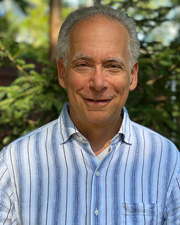Navigating NYC’s Local Law 11: An essential guide for building owners - by William Gati

In the heart of New York City’s expansive and diverse architectural landscape lies a pivotal and non-negotiable regulatory system in safeguarding the urban fabric and the lives of its inhabitants and passersby. One such crucial regulation is Local Law 11, also known as the Facade Inspection and Safety Program (FISP), overseeing the inspection of building exteriors and appurtenances every five years for structures six or more stories tall. This law aims to identify and address potential hazards or structural deficiencies that could compromise the safety of pedestrians and occupants. Understanding its implications, requirements, and the application process is imperative for the proprietors of real estate in the city to comply with.
Historical context:
Local Law 11, formally designated the Facade Inspection and Safety Program (FISP), was introduced in 1998 as a pivotal safeguard within New York City’s architectural framework. This indispensable regulation emerged as a direct response to incidents involving falling debris from great heights. It can be traced back to its predecessor, Local Law 10 of 1980, which laid the initial groundwork for facade evaluations on street-facing facades. However, the tragic events that continue to occur surrounding tall buildings required Local Law 10 to be modified in inspecting all building facades regardless of their orientation.
Identifying buildings subject to Local Law 11
To begin the process, building owners and managers must first determine whether their property falls under the jurisdiction of Local Law 11. Typically, buildings that meet the following criteria are subject to inspection:
Height: Buildings that are six or more stories high. Occupancy: Structures primarily used for residential purposes. Material: Buildings constructed with brick, stone, masonry, or stucco.
The Facade Inspection Process:
1. Who conducts the inspection: Building owners must hire a Qualified Exterior Wall Inspector (QEWI) – a licensed architect or engineer – to inspect the facades, which is integral to complying with Local Law 11.
2. The inspection itself: The QEWI thoroughly examines a visual inspection of the building’s exterior, identifying any signs of deterioration, cracks, or potential hazards.
3. Reporting: After the inspection, the QEWI classifies the building’s facade condition as:
• Safe: QEQI observed no problems on all exterior walls.
• SWARMP (Safe with a Repair and Maintenance Program): It is safe for now, but you must repair all damages within the timeframe specified by the QEWI in the report.
• Unsafe: Immediate rectification is required, or ongoing development is underway. Insecure structures must undergo repairs within 90 days. Nevertheless, property owners can request time extensions from the Department of Buildings (DOB), granted they implement adequate safety measures to protect the general public.
Preparing and submitting a Local Law 11 application:
1. Engage a QEWI: The first and most crucial step is to hire a reputable, licensed QEWI. Their expertise will ensure an accurate assessment of your building’s facade.
2. Pre-Inspection preparations: Coordinate with your QEWI to determine any required preparations, such as scaffold setups or tenant notifications.
3. Documentation gathering: Along with the inspection findings, gather necessary documents, including prior reports, repair details, and any related permits.
4. Submission to the Department of Buildings (DOB): Your QEWI will submit the findings to the NYC DOB using the required forms. Building owners must ensure timely submission, typically every five years, though exact cycles may vary.
5. Addressing SWARMP or unsafe findings: If the inspection determines a SWARMP or unsafe classification, collaborate with your QEWI to establish repair timelines. Immediate remediation is necessary for unsafe conditions, whereas SWARMP conditions allow until the next inspection cycle. To undertake repairs or enhancements, building owners must obtain the required permits from the DOB before initiating any work. These permits ensure that all repairs follow safety standards and regulations.
Undertaking repairs
and restoration
With the permits, building owners can proceed with the repairs and restoration work outlined in the Facade Inspection Report. It is imperative to hire licensed and skilled contractors for these tasks to ensure the quality and safety of the project.
Fees and penalties:
Filing fees associated with Local Law 11 vary based on the building’s size and facade area. Late submission or failure to correct unsafe conditions can lead to substantial penalties, so timely compliance is essential.
Local Law 11 isn’t just a bureaucratic mandate but a vital safety measure protecting NYC’s inhabitants and its vibrant pedestrian culture. Building owners must understand its intricacies for compliance and ensure their properties stand safe amidst the city’s ever-evolving skyline. With proper knowledge and timely action, navigating Local Law 11 can be a straightforward process, contributing to a safer New York City.
William Gati is principal of Architecture Studios, Kew Gardens, N.Y.
Check out NYREJ's Developing Westchester Spotlight!
NYREJ’s Developing Westchester Spotlight is Out Now!
Explore our Developing Westchester Spotlight, featuring exclusive Q&As with leading commercial real estate professionals. Gain insight into the trends, challenges, and opportunities shaping New England’s commercial real estate landscape.


Oldies but goodies: The value of long-term ownership in rent-stabilized assets - by Shallini Mehra

Properly serving a lien law Section 59 Demand - by Bret McCabe

How much power does the NYC mayor really have over real estate policy? - by Ron Cohen







.png)

.gif)
.jpg)
.gif)